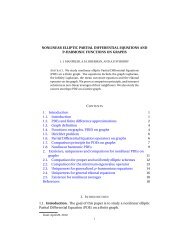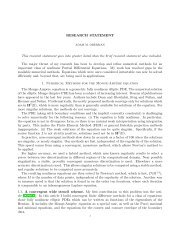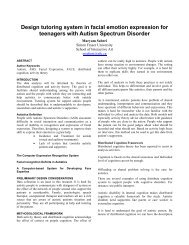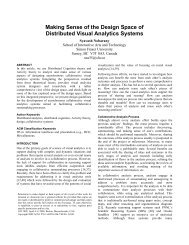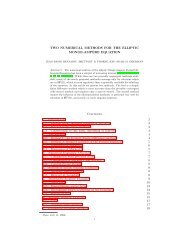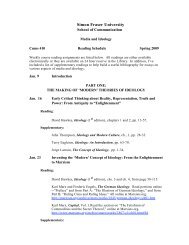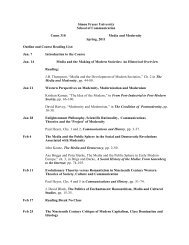Boyd Convex Optimization book - SFU Wiki
Boyd Convex Optimization book - SFU Wiki
Boyd Convex Optimization book - SFU Wiki
You also want an ePaper? Increase the reach of your titles
YUMPU automatically turns print PDFs into web optimized ePapers that Google loves.
298 PSfrag replacements<br />
6 Approximation and fitting<br />
1.5<br />
1<br />
φ(u)<br />
0.5<br />
0<br />
−1.5 −1 −0.5 0 0.5 1 1.5<br />
u<br />
Figure 6.3 A (nonconvex) penalty function that assesses a fixed penalty to<br />
residuals larger than a threshold (which in this example is one): φ(u) = u 2<br />
if |u| ≤ 1 and φ(u) = 1 if |u| > 1. As a result, penalty approximation with<br />
this function would be relatively insensitive to outliers.<br />
• The l 2 -norm approximation has many modest residuals, and relatively few<br />
larger ones.<br />
• For the deadzone-linear penalty, we see that many residuals have the value<br />
±0.5, right at the edge of the ‘free’ zone, for which no penalty is assessed.<br />
• For the log barrier penalty, we see that no residuals have a magnitude larger<br />
than 1, but otherwise the residual distribution is similar to the residual distribution<br />
for l 2 -norm approximation.<br />
Sensitivity to outliers or large errors<br />
In the estimation or regression context, an outlier is a measurement y i = a T i x + v i<br />
for which the noise v i is relatively large. This is often associated with faulty data<br />
or a flawed measurement. When outliers occur, any estimate of x will be associated<br />
with a residual vector with some large components. Ideally we would like to guess<br />
which measurements are outliers, and either remove them from the estimation<br />
process or greatly lower their weight in forming the estimate. (We cannot, however,<br />
assign zero penalty for very large residuals, because then the optimal point would<br />
likely make all residuals large, which yields a total penalty of zero.) This could be<br />
accomplished using penalty function approximation, with a penalty function such<br />
as<br />
{<br />
u<br />
2<br />
|u| ≤ M<br />
φ(u) =<br />
M 2 (6.3)<br />
|u| > M,<br />
shown in figure 6.3. This penalty function agrees with least-squares for any residual<br />
smaller than M, but puts a fixed weight on any residual larger than M, no matter<br />
how much larger it is. In other words, residuals larger than M are ignored; they<br />
are assumed to be associated with outliers or bad data. Unfortunately, the penalty



